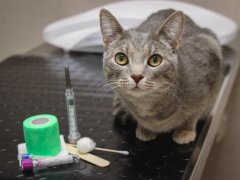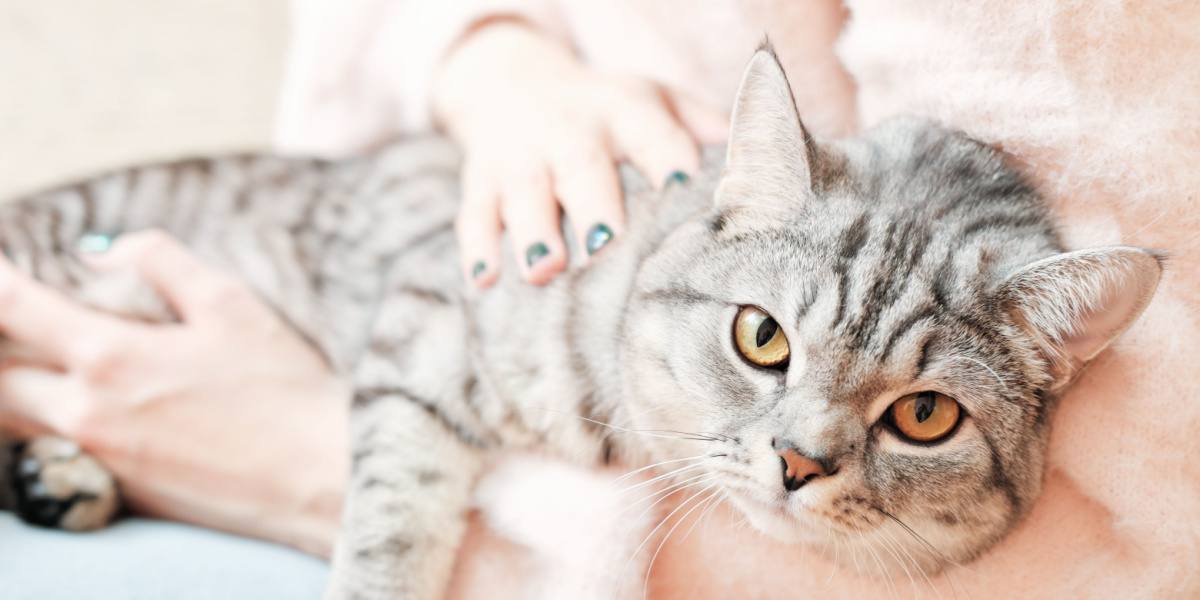
All cat owners know that cats love to be warm. Cats are certified sun worshipers, warm-lap dwellers, and in-front-of-the-fire snugglers. They love nothing better than to stretch out and bask in the warmth, wherever that might be.
Cats love to feel warm and cozy, so they often feel warmer than their surroundings when touched. Sometimes, cats can get too hot and overheat. This can be due to the environment they are in or it could be because they have a systemic fever. If your cat is overheating or has a fever, it is important to seek out veterinary attention immediately as this can be very detrimental to their health and well-being.Key Takeaways
The problem arises when cats become too warm. There are several reasons you might feel your cat and find them hot to touch. Some of these reasons are relatively harmless, but others are an indication that something is wrong.
Also Read: What Do Outdoor Cats Like To Sleep In?
Normal Temperature For Cats
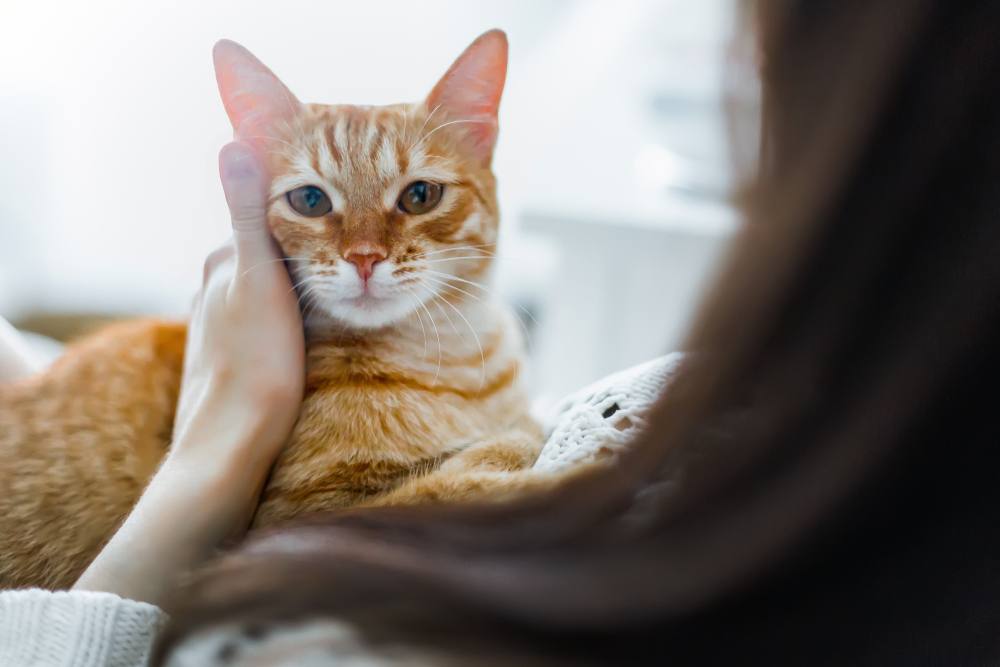
The normal temperature for cats has about a two degree range and can fluctuate depending on many different factors.
The normal body temperature for cats is usually between 100.4 and 102.5 degrees Fahrenheit, although it does vary. Body temperature can depend on a few things, including age, time of day, sex of the cat, their recent exertion level, their general health, the location the temperature was taken from, and state of consciousness/wake-sleep patterns.
Cats usually keep their body within the normal range by a process called thermoregulation. Slight adjustments of their temperature in reaction to their circumstances and environment are triggered by their central nervous system.
Also Read: Cat Body Temperature: Causes & Treatment of Abnormal Body Temperature
Reasons Your Cat Feels Hot

Taking your cat’s temperature rectally with a digital thermometer is the most accurate method.
There are a few ways that your cat can overheat or get too hot. An increase in body temperature over the normal range is called hyperthermia. Hyperthermia can be regulated or unregulated. Unregulated or abnormal hyperthermia occurs when the cat’s environment is too hot, or from excessive exertion.
Often cats overheat when the external environment becomes too hot and they are unable to cool themselves down. Regulated hyperthermia is when the body causes a raise in its own core temperature in response to a potential threat. This is also known as pyrexia.
This term means a systemic fever the body has created to help fight off something that has been interpreted as a threat such as a viral or bacterial infection.
Also Read: How To Keep Cats Cool In Summer
Let’s explore some of the reasons your cat might overheat.
1. Close Proximity To A Heat Source

Cats look for warm places to snooze in order to stay warm, but sometimes their chosen spots warms them a bit too much.
Cats dedicate a large proportion of their time to seeking out warm and cozy places. This might be in direct sunlight, or it might be next to a radiator or heater. Cats might choose to curl up in front of the fire or fold themselves up in your lap.
Cats usually get warmer gradually in these scenarios. For example, when they are sitting in your lap, your body heat will transfer to them and increase their body temperature. When they have found a comfortable place, they might choose to stay there for hours on end if they remain undisturbed.
During this time, they might become a tad too toasty. Usually, when they get too hot, they will move to a cooler place, but if you feel them just before they move you might think they feel extra hot.
Also Read: Why Do Cats Love To Sunbathe?
2. Excessive Exertion

As with humans, a cat’s body temperature rises when they exercise.
Any form of physical activity such as being chased by predators, catching prey, playing with toys, or just generally zooming about the house can cause a cat’s temperature to increase. Just as humans tend to generate heat by exercising, cats do, too. Cats, however, don’t sweat like we do, so they tend to get hotter quicker during bursts of physical activity.
Also Read: Why Do Cats Chase Their Tails?
3. Heatstroke

If a cat begins to overheat and can’t move to a cooler location or drink water, they might develop heatstroke.
Historically, cats were actually quite well-equipped at coping with extremes of heat. Some cats used to live in desert locations, long before we domesticated them. Modern-day environments can sometimes pose an issue though. This can affect indoor cats and outdoor cats in equal measure.
Cats are physically unable to sweat as we humans do. They also don’t resort to panting as much as dogs do, which is another useful way of losing heat. When cats start to overheat, usually they move themselves to a cooler location or drink some water. If they are unable to escape the warm location or no water is available, this is often when heatstroke occurs.
Younger or smaller cats, older cats, and cats with flat faces such as Persians are more susceptible to heatstroke. Your cat’s health will determine how badly they get heatstroke, too. If they are already unwell, they will be less equipped to deal with extremes of temperature.
Also Read: Cat Body Temperature: Causes & Treatment of Abnormal Body Temperature
4. Systemic Fever
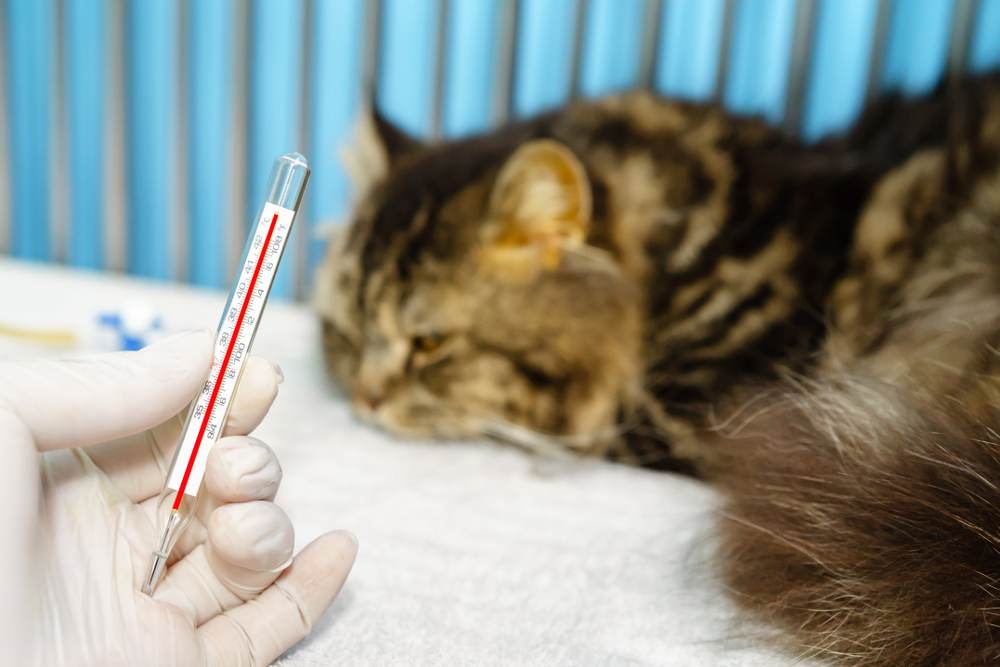
It’s best to avoid using glass thermometers to take your cat’s temperature as these can easily break and spill dangerous mercury.
A systematic fever is one of the body’s immune system defense mechanisms. Your cat’s body will deliberately raise the core temperature of their body in an attempt to fight off some sort of perceived threat, such as an infection.
Other causes of fever can be pain, abscesses, certain poisons, trauma, a condition called pyrexia of unknown origin, or an adverse reaction to drugs. Cats alter their temperature using a part of their brain called the hypothalamus. Usually, a fever is an indication that there is something wrong with your cat.
Normally, fever is accompanied by other symptoms if your cat is unwell. These might include lethargy, hiding away, not eating, or panting. If you think your cat has a fever, this is definitely one of the times you need to take action. You can take your cat’s temperature rectally, or call your vet immediately and arrange for an appointment.
Also Read: 10 Subtle Signs Your Cat May Be Sick
Signs Your Cat Is Overheating

Panting is not normal in cats as it is with dogs; a panting cat should see a vet immediately.
Signs of overheating in your cat can vary greatly. The more common signs include:
- Panting
- Open-mouth rapid breathing
- Lethargy/weakness
- Loss of appetite
- Yowling
- Hypersalivation/drooling
- Vomiting
- Diarrhea
- Dark red gums
- Convulsions/seizures
- Ataxia
- Collapse
How To Prevent Your Cat From Overheating

A pet fountain provides a continuous supply of fresh water so cats stay cool and hydrated.
If you know that your house is very hot or some areas might reach high temperatures during the day when you are out, there are some important measures you can take to prevent your cat from overheating:
- Allow access to cool, fresh water 24/7
- Provide secluded cool places to nap
- Keep interior doors open to allow airflow and prevent your cat from getting trapped in one room
- Open windows if it is safe and secure to do so
- Use air conditioning or fans to keep air circulating
To make an area that is cool for your cat to nap, you can freeze a water bottle, wrap it in a towel, and put it underneath the bed. Be aware that very young kittens and elderly cats are more susceptible to extremes of heat.
Also Read: The 8 Best Cat Water Fountains – And We Tested Them All
Final Thoughts
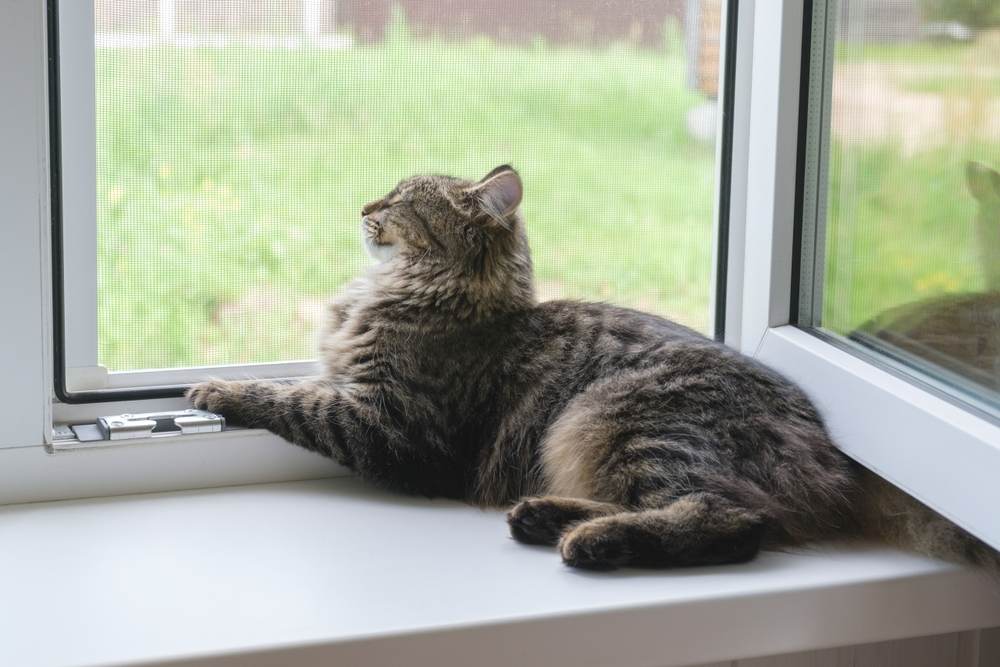
Cats are usually good at seeking out places to warm up or cool down as needed, but overheating or fever requires veterinary attention.
It’s common knowledge that cats are like heat-seeking missiles when it comes to getting warm and cozy. Often, cats feel hot to the touch because they have become a bit too warm, but they usually take measures to cool off. However, if cats are exposed to a hot environment and don’t have the means to cool themselves down, they can get heatstroke. Heatstroke is problematic as cats can get extremely ill and even die.
Cats might also feel hot to the touch when they develop a high fever. This is a defense mechanism of the body. If your cat feels warm to the touch and they are showing symptoms of fever or heatstroke, they require immediate veterinary attention.
Also Read: 15 Tips To Help Your Cat Adjust To Your Home
Frequently Asked Questions
What to do if your cat feels hot?
If you are concerned your cat feels hot, there are a few things you need to do immediately:
Should I be concerned if my cat feels warm?
If your cat feels unusually warm, this is normally a cause for concern. If they are overheating or have a fever, they require veterinary attention. A cat’s normal body temperature is usually between 100.4 to 102.5 degrees Fahrenheit.
If their temperature goes above 102.5 degrees, we have cat fever on our hands. If their temperature goes above 106 degrees Fahrenheit, they are at serious risk of experiencing irreversible organ damage.
Do cats feel warm to the touch when they have a fever?
If your cat has a fever, they will feel warmer than usual to touch. You might notice they have hot ears and feel warmer in other areas such as their feet and their face. They might also be more lethargic than usual and hide away, go off their food, and start panting.
Feeling your cat is a very subjective way of measuring their temperature. If you are concerned it is best to measure it rectally with a thermometer or even better, get your vet to do it.
How do you check if your cat has a fever?
Taking your cat’s temperature at home can be tricky. The best way to check your cat’s temperature is to use a rectal thermometer. You can also use a digital thermometer inserted into your cat’s ear, but this method is less accurate. Avoid using old-fashioned mercury thermometers as these can easily shatter and this is very dangerous for you and your cat.





